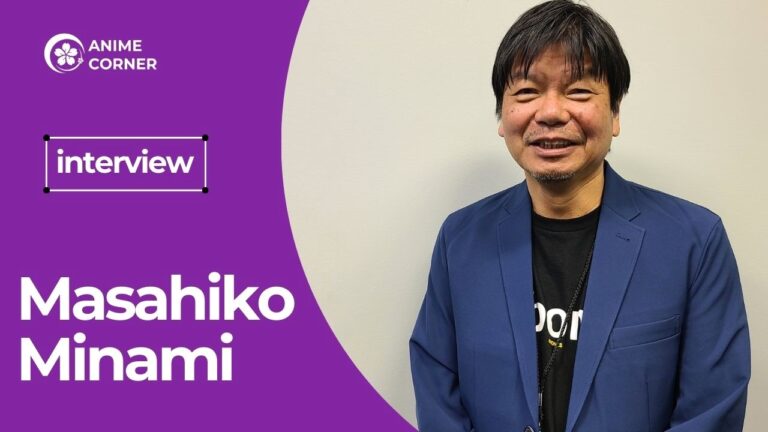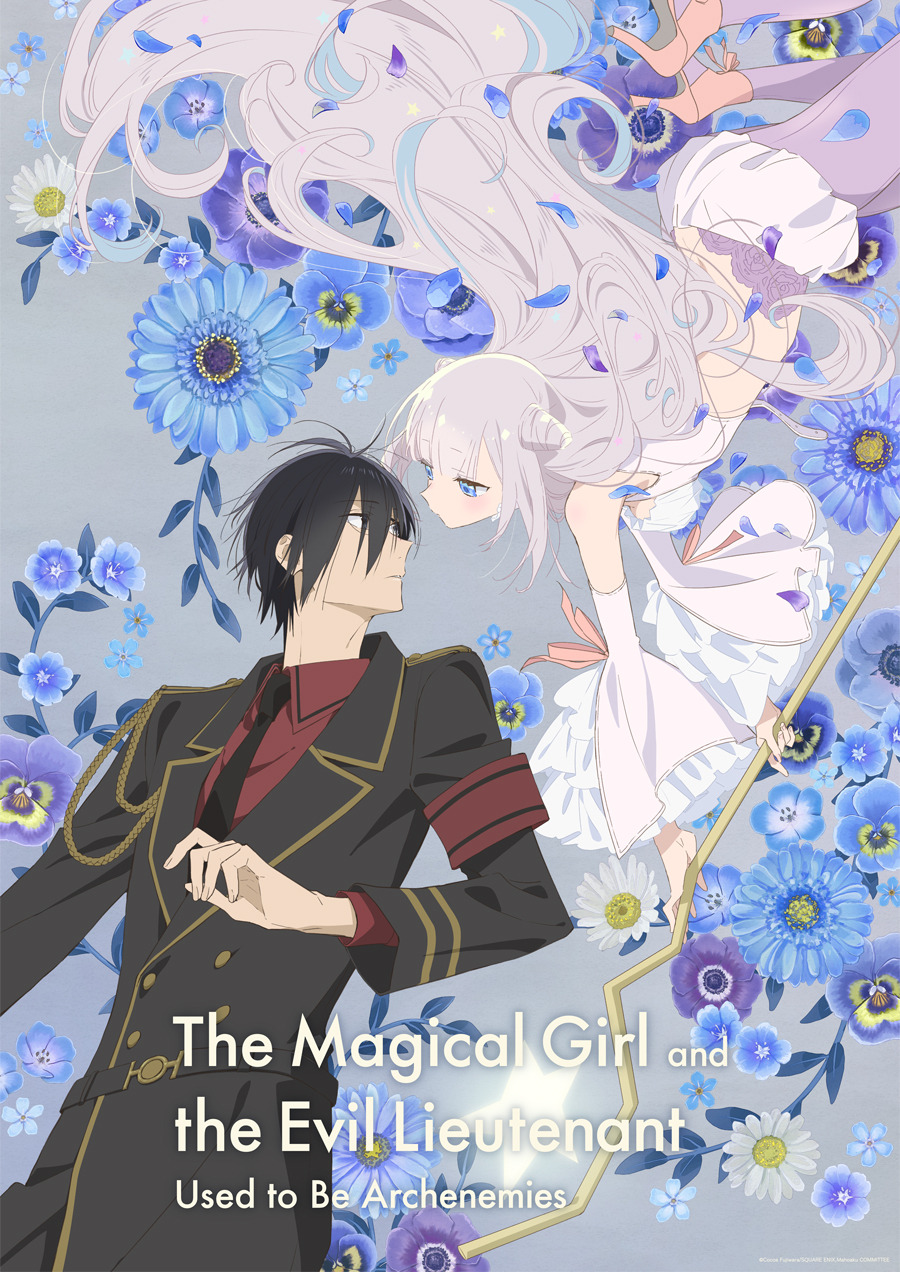Bones is one of the most prolific animation studios of the 21st century and one that I’ve had the fortune of spending my life following. On the heels of the studio’s announcement of an adaptation of Cocoa Fujiwara’s The Magical Girl and the Evil Lieutenant Used to Be Archenemies (shortened as MahoAku), we got the chance to speak with Masahiko Minami, the president of Bones. The conversation focused principally on the journey to adapting MahoAku and Mr. Minami’s philosophy in creating anime and running an animation studio. This interview has been lightly edited for clarity.
The Story Behind the MahoAku Anime Adaptation
To start, Mr. Minami spent some time explaining how he originally found out about MahoAku, as well as how he decided to adapt the series into an anime following Fujiwara-sensei’s passing in 2015.
“Working on adapting this series for a TV anime started way, way long ago, originally. But I was at an event called AnimagiC, an anime-related convention in Germany, where I had run into and was meeting with an editor from Square Enix, who I’d known before. And it just so happened that Cocoa Fujiwara-sensei was also at this event. So we just sat down and had a chat, but she mentioned to me how she was a fan of Bones’ works and was very interested in possible collaboration in the future. And that was right when Inu × Boku [Inu × Boku SS] had been adapted into anime as well, so I actually had heard of both her work and her, both because I had watched it myself and enjoyed it quite a bit and because it had been very popular in Japan. So she mentioned to me that she was currently working on her next title. That was MahoAku.” “When I came to Japan after that event, I had the opportunity to read the manga. It’s not a lengthy story or one long story, not quite four panels [also called 4-koma, yonkoma, or four-cell manga], but a series and collection of short vignettes. I found it to be very cute, especially the relationship between Mira and Byakuya. It felt very new at the time, something that we hadn’t really seen before, because you have these two who are antagonists to each other and yet they share many things in common, like their idiosyncrasies and how they saw life. How they played off of each other when they would interact really sparked my interest, so I thought to myself, ‘If this were ever to become an anime, I’d love to have Bones be involved in its production.’ Bones is known for our action series and sci-fi series, but we’ve done quite a few shojo works [marketed toward young women and girls] like Ouran High School Host Club and Snow White with the Red Hair. I personally also enjoy shojo manga, so we approached Square Enix and proposed the project.”
I asked Mr. Minami whether he had any similar encounters like that at conventions like Anime NYC. Anyone at a large convention will inevitably run into thousands of creators and parsing those interactions while discovering new source material yields countless possible projects.
“This example of meeting Fujiwara-sensei and MahoAku eventually being adapted by Bones is not a very common example for us. Of course, coming to events like Anime NYC and meeting new creators is a constant. But in terms of that then leading to a new project in collaboration with Bones does not happen very frequently. What happens more frequently is that I or one of our staff come across the original work. It sparks our interest, and we think, ‘Oh, this would be fun for Bones to adapt into anime,’ and that’s how the project develops.”
Staffing and the Production Process
Mr. Minami also gave us some insight into how the staff for MahoAku was chosen. Notably, it turns out that the all-female main staff wasn’t an intentional organizational choice, but rather something that happened organically as the anime project took root.
“Turning MahoAku into an anime first came up nine years ago. I already had plans for the production staff at the time. Unfortunately, Fujiwara-sensei passed away, and the project was shelved for a time. But now that it’s nine years later, the staff we have is completely different than who we had originally envisioned might work on the project. What I initially did when we decided to move ahead again with this project was to re-read the manga and use my latest impressions to decide who might work best in the different roles for the project. With regard to Director Ohashi [Akiyo Ohashi] in particular, she may not be a very seasoned general or supervising director, but I felt that she was perfect for MahoAku because she’s very good at capturing and depicting characters’ emotions. The character designer, Haruko Iizuka, had done the character designs when Inu × Boku had first been adapted into anime, so we knew that she was not only very familiar with Cocoa-sensei’s work, but would also be able to express the charms of the characters. She had also worked on a previous Bones work, Josee, the Tiger and the Fish, so we were familiar with her from that as well. For Ayana [Yuniko Ayana], who did the series composition and script, and Mayuko, who worked on the music, their names actually came up from Director Ohashi.”
“Director Ohashi had said, ‘I’d really love to work with these two on MahoAku,’ and so we extended the offer and they accepted. So we kind of fell into a main staff that was entirely composed of women. Director Ohashi had started her career as a key animator. Because of that, she’s very talented at expressing feelings through illustrations. The production staff values Director Ohashi’s vision. It feels like the main staff are all working on the same path, which functions very well in adapting MahoAku into an anime.
We asked Mr. Minami about his impressions of the series after he reread it.
“What’s really surprising is the fact that when I reread MahoAku, my overall impression hadn’t changed at all. I think that Cocoa-sensei’s original work has a bit of a fantasy element to it, but the two characters, Byakuya and Mira, each of them has their own emotions. They each come from completely different places, and they start out with very different views, but as they interact, they come to feel like they have to take care of each other. It’s part of the fantasy in the story, but also something that’s universal. It’s something that we relate to in the real world. But overall, my biggest impression is, ‘Oh my god, this work is so cute.’”
Something I took the opportunity to ask Mr. Minami about concerned the response to the MahoAku anime announcement on social media sites. There were, broadly speaking, two kinds of responses to the announcement. One form was excitement or general interest in the anime and the other was surprise that it wasn’t a shonen series.
“In short: I treasure variety. Of course, I feel that part of Bones’ strength is to put out action or fantasy or sci-fi, but the reason why I make anime, why I’m in the animation industry at all, is because of the expressiveness of the artform.”
“I feel that the creative process for anything, any anime, begins because you have a producer, an animator, a director, or a combination of those people saying ‘I want to do this.’ Right now, we have five studios lettered A, B, C, D, and E, and we have the flexibility to have those studios partner up in different ways to work on each project. Each studio can get involved in individual projects or if we decide to do a large project, then we can decide that ‘Okay, A and B will work together on this bigger project, but then C, D, and E can do their own things separately.’”
“It’s been 25 years since we were founded. Throughout those 25 years, we’ve been bringing in new staff that are aligned with Bones’ vision. At Bones, we try to put out something completely original every year or every two years. But, as you can imagine, because we’re not adapting something that already exists, we’re starting from scratch, which poses its own creative obstacles. When you’re doing original work, you are the original creator, so I feel that that also will keep our company fresh and continuing to move forward. What it boils down to is that we want to keep fans enjoying the anime that Bones puts out, but at the same time kind of startle them and keep them on their toes.”
A Final Word to Fans on MahoAku
To close, we got some final words and thoughts from Mr. Minami about MahoAku. “Right now, streaming has given anime global possibilities by being able to reach people around the world. Through our anime adaptation, I want lots of new fans to encounter Cocoa-sensei’s vision and world and go back to read the original work as well as her other work. MahoAku is a very cute series that’s easy to watch and get into. I want people of any gender and age to watch this because in the end it’s not just cute. It really tugs at your heartstrings.”
“For example, take a middle-aged businessman who is facing trouble at work goes home after a drink to find that the wife and kids are already asleep. He plunks himself on the sofa, turns on the TV, and Mahoaku happens to be on. He can watch, thinking ‘Oh, this is cute,’ and maybe a little tear will appear in the corner of his eye. I feel this series will become an anime where you can watch when you’re feeling alone and it will help you forget all your troubles.”
We’d like to thank Masahiko Minami for taking the time to speak with us as well as for bringing such a great project to Bones. We look forward to news about the MahoAku anime and other Bones projects such as Metallic Rouge. When the time comes to offer coverage on these series we at Anime Corner will do our absolute best to do them justice.


Participate In Discussions